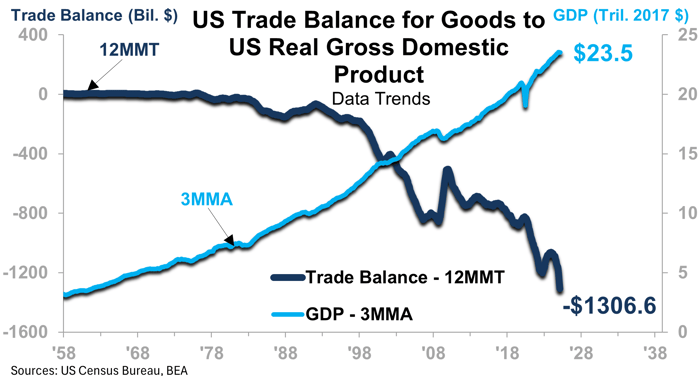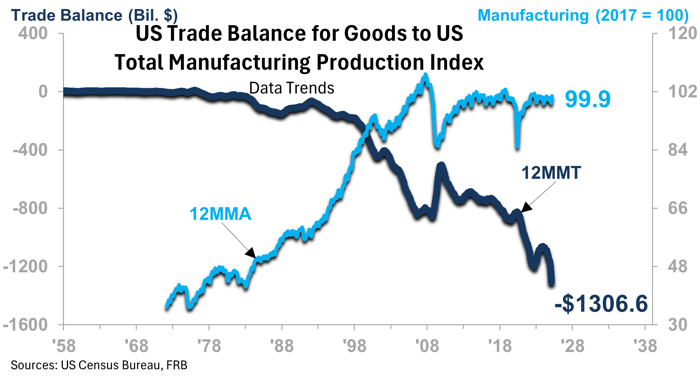The US is running a trade deficit, a clear fact that has sparked a lot of the current tariff situation. Currently, the annual US Trade Balance for Goods is -$1,306.6 billion and US Trade Balance for Goods and Services is -$1,035.0 billion. Those seem like overwhelming numbers, so we need to put them in context.
The current US Trade Balance of Goods with the World as a Percent of US GDP is -4.0%. That number has vacillated around -4.0% since 2010. Focusing on just the raw trade balance ignores the point that there is relative stability in the deficit, and this has been a normal trend for over a decade. Focus on that thought for a moment. The Trade Balance for Goods as a percent of our US GDP has held steady for roughly 15 years.
Think back to the last 15 years. How has the economy performed? How has your business performed?
Looking at the below chart, we see the Trade Balance in dark blue, and the dark blue line is falling. That is the Trade Balance causing such concern. The light blue line is the US GDP trend. GDP has grown and thrived with little regard for what the Trade Balance has done for the past 60+ years.

The following chart shows that the US trade deficit has not brought about the collapse of US Total Manufacturing Production. The light blue line, US Total Manufacturing Production, grew into 2008. In the post-Great Recession time period, US manufacturing has been relatively steady except for the COVID-related decline.

Having a negative trade balance is not a death sentence for the US manufacturing sector.
Looking at this from a different perspective, our analysis suggests that there are risks to the US economy the more manufacturing heavy our economy becomes.
Our analysis of past recessionary cycles shows that the manufacturing sector has deeper recessions than the service sector of the economy. In some instances, the service sector avoids recession altogether. With the 2030s looming ahead of us, we have done a lot of research into which industries and which countries will fare better. One consistent trend is that the countries with heavier concentrations in manufacturing are going to have a deeper depression during the 2030s.
If you are in the manufacturing sector, look for ways to become service oriented or develop ties to service industries as a way of mitigating the depression’s impact on your business. Learn more about how the manufacturing sector will be impacted during the upcoming depression so you can better prepare your business.